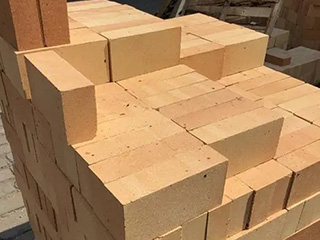Refractory materials are essential for high-temperature applications, such as furnace linings, kilns, and boilers. They provide insulation and resistance to thermal shock, chemical attack, and mechanical wear, ensuring the stability and durability of the equipment. In this article, we will provide a comprehensive review of refractory material options, including their properties, applications, and advantages.

1.Fireclay
Fireclay is a type of refractory material made of natural clay, which has a high content of aluminum and silica. It is a versatile and cost-effective material that is ideal for use in low-temperature applications, such as fireplace linings, chimneys, and ovens. Fireclay bricks have good thermal conductivity and resistance to thermal shock, making them suitable for use in furnaces and kilns with temperatures up to 1600°C.
2.Silica
Silica, also known as silicon dioxide, is a refractory material that has a high content of silica, typically more than 90%. It is a hard and brittle material that is resistant to thermal shock and chemical attack, making it ideal for use in high-temperature applications such as glassmaking and metallurgy. Silica bricks have high thermal conductivity and can withstand temperatures up to 1650°C.
3.Alumina
Alumina, also known as aluminum oxide, is a refractory material that has a high content of aluminum, typically more than 50%. It is a strong and durable material that is resistant to thermal shock, chemical attack, and abrasion, making it ideal for use in high-temperature applications such as steelmaking and petrochemical processing. Alumina bricks have high thermal conductivity and can withstand temperatures up to 1800°C.
4.Magnesia
Magnesia is a refractory material that is made of magnesium oxide, which has a high content of magnesium, typically more than 90%. It is a lightweight and durable material that is resistant to thermal shock and chemical attack, making it ideal for use in high-temperature applications such as cement production and non-ferrous metal processing. Magnesia bricks have low thermal conductivity and can withstand temperatures up to 2000°C.
5.Zirconia
Zirconia is a refractory material that is made of zirconium dioxide, which has a high content of zirconium, typically more than 90%. It is a strong and durable material that is resistant to thermal shock, chemical attack, and abrasion, making it ideal for use in high-temperature applications such as ceramics and electronic components. Zirconia bricks have high thermal conductivity and can withstand temperatures up to 2400°C.
6.Carbon
Carbon is a refractory material that is made of graphite, which has a high content of carbon, typically more than 90%. It is a lightweight and durable material that is resistant to thermal shock and chemical attack, making it ideal for use in high-temperature applications such as aluminum smelting and carbon black production. Carbon bricks have low thermal conductivity and can withstand temperatures up to 3000°C.
Advantages of Refractory Materials
Refractory materials offer several advantages for high-temperature applications, including:
1.Thermal Insulation
Refractory materials provide excellent thermal insulation, reducing heat loss and improving energy efficiency in high-temperature equipment.
2.Thermal Shock Resistance
Refractory materials are resistant to thermal shock, meaning they can withstand rapid changes in temperature without cracking or breaking.
3.Chemical Resistance
Refractory materials are resistant to chemical attack, meaning they can withstand exposure to corrosive substances without degradation.
4.Mechanical Wear Resistance
Refractory materials are resistant to mechanical wear, meaning they can withstand abrasion and erosion caused by materials flowing through the equipment.
Conclusion
In conclusion, refractory materials play a critical role in high-temperature applications, providing insulation, thermal shock resistance, chemical resistance, and mechanical wear resistance. There are several types of refractory materials available, each with unique properties and advantages for specific applications. It is important to choose the right type of refractory material for your equipment and process, taking into account factors such as temperature range, thermal conductivity, chemical resistance, and cost-effectiveness. Working with a knowledgeable supplier or manufacturer of refractory materials can help you select the best materials for your specific needs, ensuring the stability and durability of your equipment and process.
Contact: Mgr. Han
Phone: 0086-13589497465
Email: 1255953279@qq.com
Add: Industrial Area of Lingzi Town,Zichuan District,Zibo City, Shandong,China